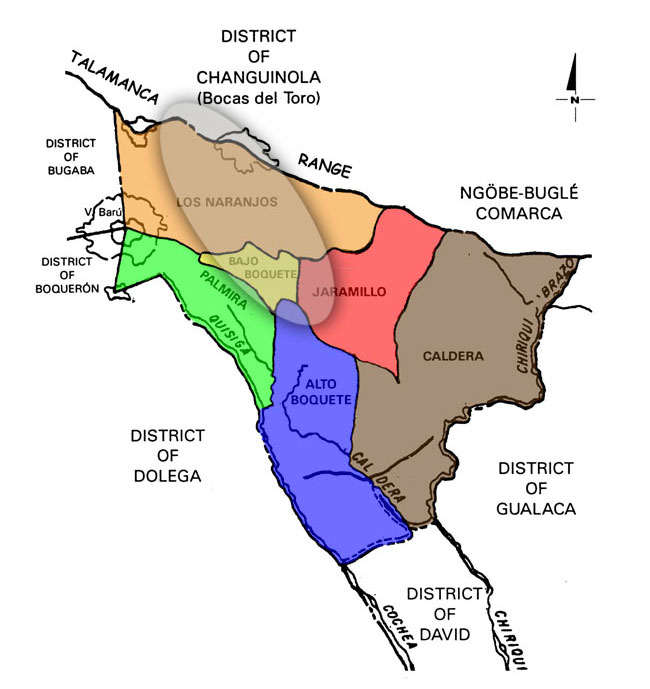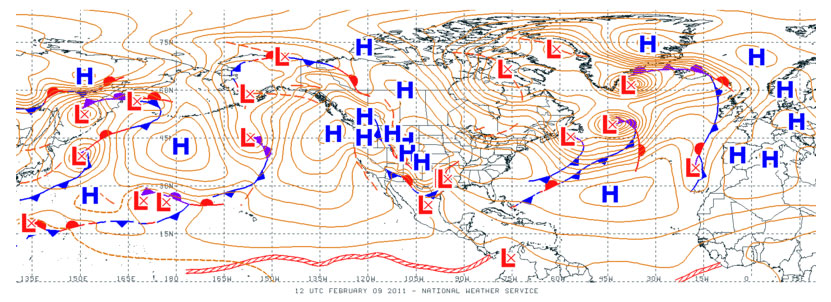| February 09, 2011 | No. 38 |
I posted the January 2011 weather data for the Palmira Weather Station at the first of the month. We are clearly into the dry season. Here in Palmira we had a total of less than an inch of rain (0.35 inches). Terry Zach in El Santuario (just north of Bajo Boquete) manually measured 6.1 inches of rain for January and Craig Bennett in Los Naranjos (just north of the Ruiz coffee shop) measured 3.61 inches of rain. You can see that the Palmira area had a lot less moisture than the other areas. This happens this time of the year along with more wind. Why? Here are my thoughts about it.
As we move into the dry season, on the other side of the Talamanca Range (the ridge of mountains north of the Boquete District) in the Bocas Region (District of Changuinola) moist air off the Caribbean is moving via the winds into their area and as it lifts in the mountains, rain is produced. Bocas actually gets rain during our dry season and doesn't really have a dry season. It is a different climate over there. The winds then carry that moisture in the form of mist over the tops of the mountains into the northern part of the District of Boquete. This mist or spray blows over us and sprays mostly on Bajo Boquete (downtown Boquete) and the areas north of downtown. This mist is called the Bajareque by the local residents. Here is a graphic to illustrate the areas of the district most affected by the Bajareque.

Since Palmira is more on the south side of the big mountain (Volcan Baru) it is more protected from the Bajareque and the winds. We actually get very little of this drizzle. That is why we recorded less than an inch of moisture for January and El Santuario recorded over 6 inches. If rain and drizzle bug you, you might want to consider living out of the Bajareque Zone (BZ). The flip side is that if you really like for things to look very green during the dry season find a place in the BZ.
The winds were beating on us during January and the first days of February. This happens every year during the dry season. Why? The simple answer is that high pressure air seeks and moves toward low pressure areas. If you follow the weather north of us this time of the year you will notice a lot of activity with cold air masses. The high pressure cold air associated with these masses want to move into low pressure areas. Since the ITCZ is south of us and is a low pressure area, all of that high pressure air from up north wants to head south which generates a lot of NE winds. If you study the Unified Surface Analysis map on a regular basis, you can see all of this in action. Here is the current one (Note the big H pressure area in the Atlantic-Caribbean and the L pressure in our area):

Your location in the District of Boquete also affects how much blasted wind you get. The terrain channels the wind through the area. I previously discussed this in the article on Understanding Boquete Weather and Climate. We always have wind this time of the year no matter where you live in the district, but some areas are more vulnerable to high winds. Fortunately, the winds wax and wane and are not usually steady. We have to learn to live with them. I often tell people to think of it this way, "If it weren't for the NE winds, Columbus would never have found this place and we probably wouldn't be here!" This often takes the wind out of their sails.....
You probably won't need your umbrellas for a while so this is a good time to clean and repair them so they are in good order and ready for the next rainy season. You might however want to use it for a sunny stroll.
Lloyd Cripe
